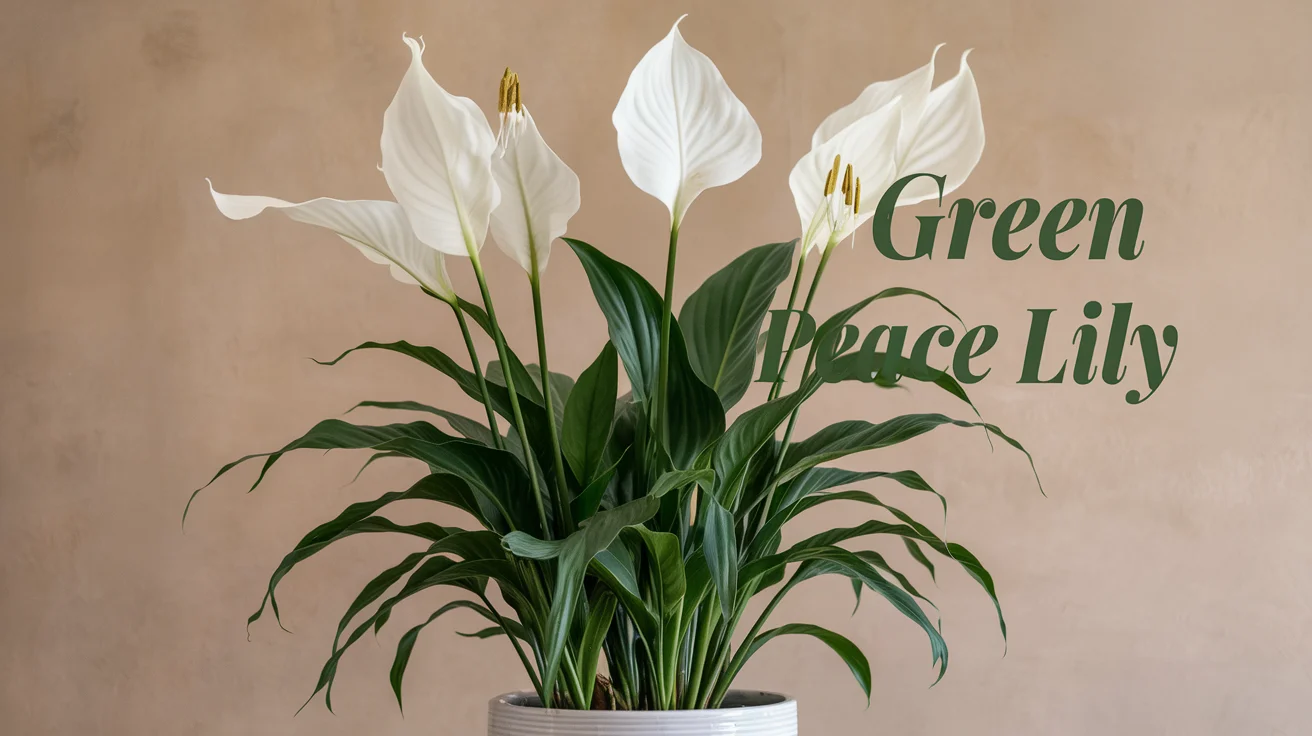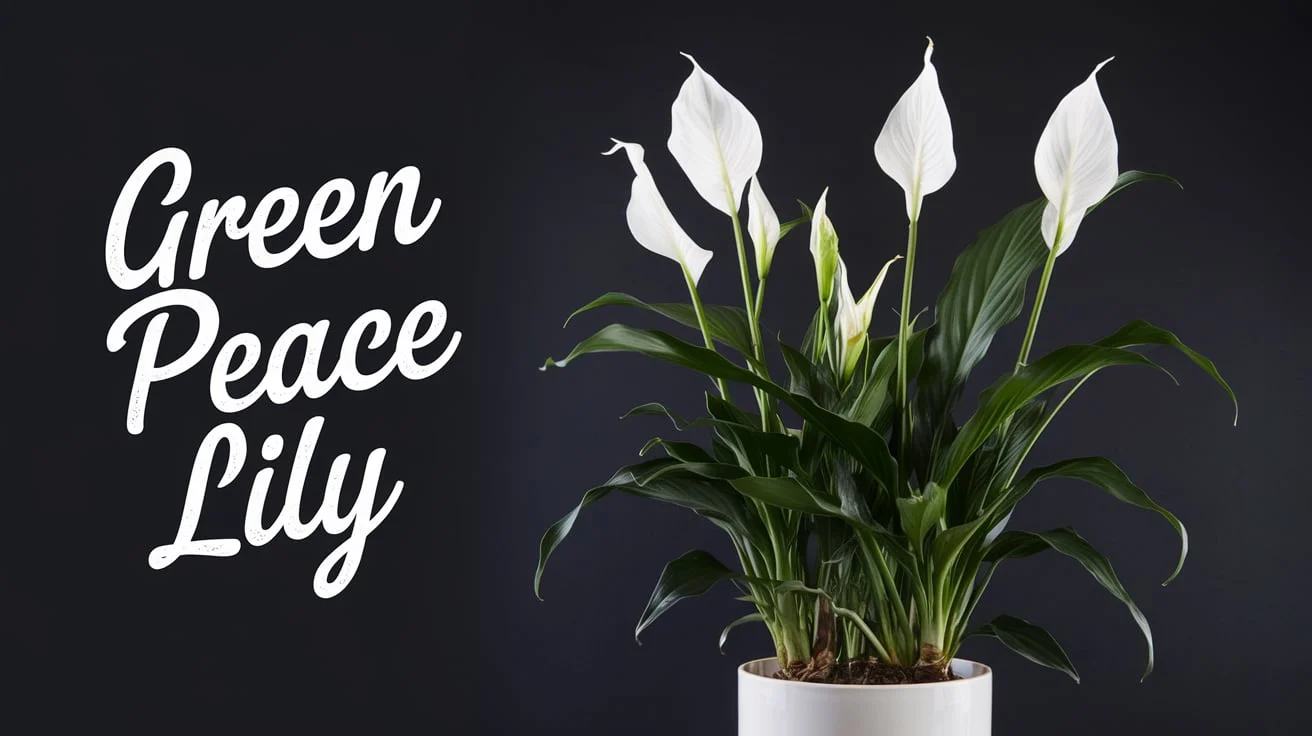The peace lily (Spathiphyllum) is a common indoor plant. It is loved for its white flowers and green leaves. It is not only an ornamental beauty to a room, but also serves many other functions, including air purifying. This article will cover this beautiful plant. It will explain how to care for it and why it is so interesting. It is perfect for both beginners and professionals.
Defining Features of the Peace Lily
Among houseplants, the green peace lily is admired primarily for its beautiful aesthetics. Most of the time, it grows between 1 and 4 feet high, depending on the species and place of growth. Apart from the sheaths, many species of the peace lily contain flowers that can give bright colours to the room, as they can have 18-inch-long dark green leaves.
The flowers of the peace lily are actually quite interesting, consisting of a driving part or spadix, which is a thick, fleshy spike, and a cover known as a hood or a spathe. They typically bloom all year round, but the most flowers bloom in spring and summer. Their beauty, as well as their long duration of life, which can be several weeks, is found in every “young” flower before it wilts.
Origin and Habitat
Peace lily is also found in the tropical rainforest regions of Central and South America. It does well in cooler, shady, and damp areas in its natural habitat. The plant has grown accustomed to low light and therefore can be kept indoors without any worries.
Ideal Growing Conditions
While it is nearly impossible to get it all, the peace lily does well in warm temperatures with some consideration given to the relative humidity. It is suited for temperatures of about 65 to 85 degrees Fahrenheit (18 to 29 degrees Celsius). It is important to avoid exposing it to direct sunlight, as this will burn the leaves. Rather, please place it in bright but indirect light.
Watering and Soil Requirements
Watering is an integral part of caring for your peace lily, and therefore, watering is very critical. A peace lily that is grown in soil should be watered moderately and kept evenly moist, but the soil should not be soggy. You may only water when the first inch of soil has dried out. To summarize, you ordinarily water your peace lily every week to every two weeks.
Using a potting soil that is good at draining is crucial. A suitable mixture consists of peat, pine bark, and perlite. This mix helps with proper drainage and retains some amount of water in the soil as would occur in nature.
Fertilization Tips
Coming to the fertilization of the peace lily. This promotes vigorous growth as well as blooming. Fertilize every sixth or eighth week during the growing period associated with spring and summer. A moisture-ready-to-use equal distribution of fertilizer should be applied. Do not apply fertilization during fall and winter because that is when the plant is not growing rapidly.

Common Issues and Troubleshooting
The peace lily evinced enough lower maintenance to bypass many of those, still facing hurdles as indicated earlier. Here is how to fix some of the problems that can generally occur:
- Yellowing Leaves: This would be due to excess water or waterlogging. Look for soil moisture content and then see the bottom of the pot; if there are holes for drainage.
- Brown leaf tips: This is usually underwatered or possibly low humidity. Water it more often and try to use a humidifier or a pebble tray to increase the humidity levels.
- Drooping Leaves: A peace lily that appears to be drooping down has a possibility of requiring more water or more light than it is perceived to need. Make sure you are providing the right environment.
- Pests: Stress and infection with the common pest most commonly do not develop in the peace lilies, but spider mites and aphids do. Regularly check your plant, and if you find pests, treat them with insecticidal soap or neem oil.
Propagating the Peace Lily
It is quite exciting to propagate your green peace lily by creating new plants from the existing ones. The most common technique is division. Here’s how to do it:
Choose a Healthy Plant: Use a mature peace lily and look for several stems that have grown.
- Remove the plant from its pot: This is not a uniform process for all peace lily plants; if the root has grown pot-bound, get a proper plant with its potting soil removed from the pot.
- Divide the Roots: Look for natural divisions in the roots. With clean, sharp scissors, separate the plant into pieces with one leaf and one root system in each piece.
- Repot: Place the pieces into individual pots with fresh potting mix. Water well.
- Care for the New Plants: Put them in a warm and well-lit spot, and ensure that they’re evenly moist.
Air-Purifying Qualities
Tasks other than its beauty include the useful properties of the plant, which is usually a common sight in homes, such as the peace lily. According to NASA’s Clean Air Study, it has been established that peace lilies, being plants with a vast majority, tend to purify the air and contain toxins such as formaldehyde and benzene, among others. With the introduction of this plant in your house, the levels of indoor pollution will be reduced, thus creating a better living environment.
Toxicity Considerations
The peace lily, while being an attractive indoor plant, should also be noted to be poisonous when eaten by pets and humans. This plant consists of calcium oxalate crystals, which can create some inflammation within the mouth and throat. If there are animals and young children around, then this plant should be kept away from their reach, or better still, you can choose to use a different plant that is not poisonous.
Final Thoughts
In conclusion, the peace lily is more than just a pretty face. With its beautiful blooms, air-purifying properties, and limited effort to care for, it is an ideal plant to brighten up any room and for anyone who wishes to transform their indoor space. The peace lily is indeed a plant for every home, and every way you place it, it will flourish, making your house more beautiful.
Enjoy the improvement and look of this wonderful green peace lily in your home now. Given proper care and a conducive environment, this plant will gratify you with its gorgeous leaves and flowers for years.





